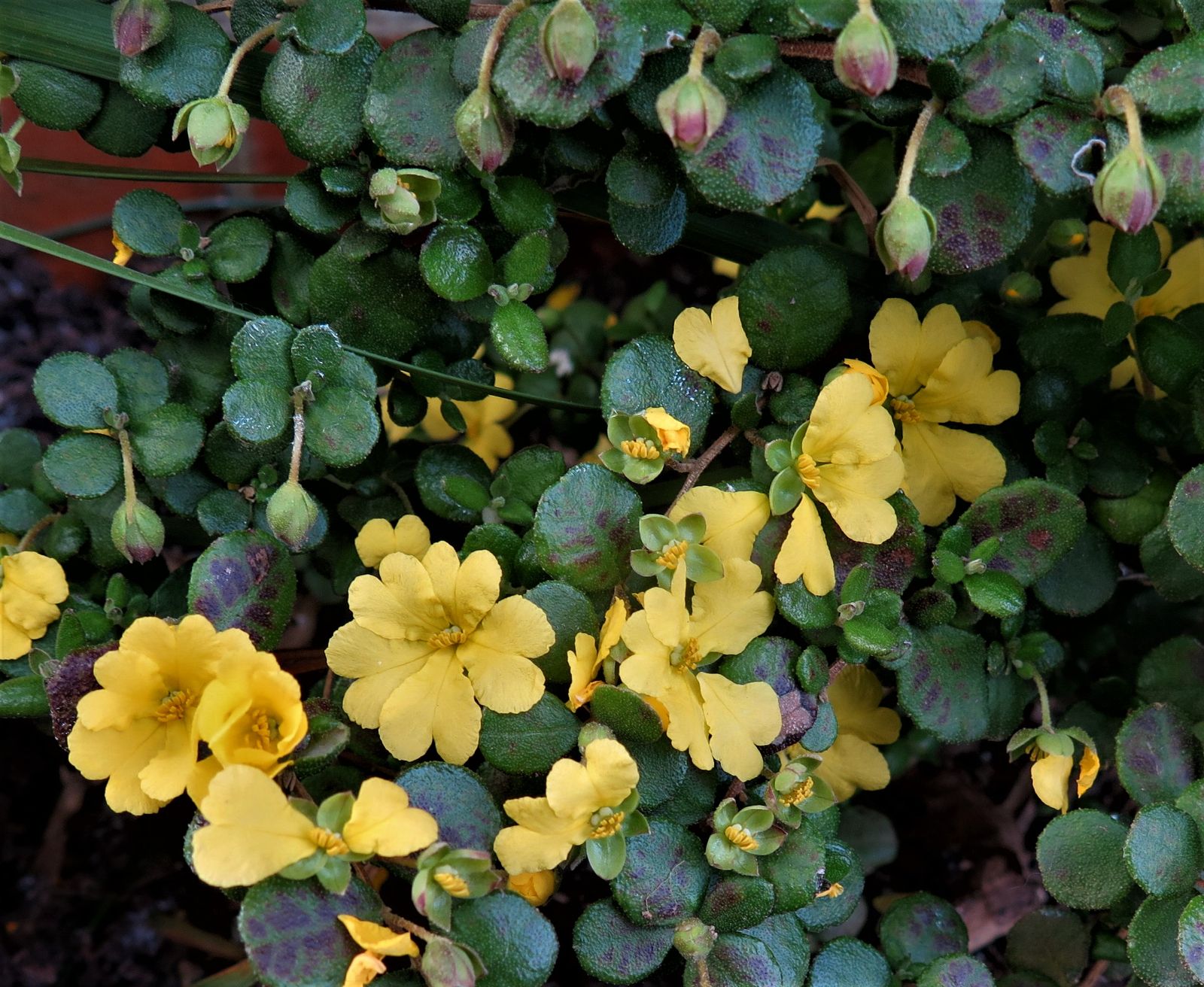Hibbertia
Sponsor
Kindly sponsored by a member of the International Dendrology Society.
Credits
Tom Christian (2018)
Recommended citation
Christian, T. (2018), 'Hibbertia' from the website Trees and Shrubs Online (treesandshrubsonline.
Family
- Dilleniaceae
Common Names
- Guinea Flower
A genus of approximately 150–175 described species of flowering trees, shrubs, sub-shrubs and climbers, native to tropical, subtropical, arid and Mediterranean biomes in Australasia, with their centre of distribution in Australia (where a great many new species await valid publication) but well represented in nearby floras, especially those of New Caledonia, New Guinea, Fiji, with a single outlying species endemic to Madagascar (Abdul Raheem 2012).
Leaves simple, alternately or spirally arranged, usually obscurely veined, sessile or subsessile, margins usually entire, sometimes crenate or serrate. Flowers hermaphrodite, terminal, solitary or else in 1-sided racemes or spikes, sepals and petals in 5s, petals usually always yellow or golden-yellow, rarely orange or pale pink. Stamens (3–)5–100, free or clustered, ovary comprised of 1–5(–>10) carpels. Fruiting body of splitting follicles, seeds globular, usually orange, yellow-orange or red-orange, with a membranous aril, 1–4 per chamber. (Western Australian Herbarium 1998, Cullen et al. 2011).
The common name Guinea flower, which seems to be applied to all species, came about by virtue of the rounded yellow or golden flowers. This coloration is common to virtually all species, many of which are considered to be of horticultural merit, although very few are reported to be in cultivation even in their native ranges. Loudon (1838) described three species of “half-hardy climbers” cultivated in Britain in the early 19th century, which might “live against a wall with protection”.
Today only the Australian species H. aspera and H. scandens described on this site are known to be in general cultivation in our area, and their progress is likely to be limited by severe winters. As is to be expected from a genus with a largely tropical to arid distribution, other species are cultivated in milder parts of the world, and some of these have been tried here by intrepid and persistent growers, including the Cut-leaf Guinea flower H. cuneiformis and the dwarf H. procumbens (J. Grimshaw pers. comm. 2018). In their native Australia, species including H. dentata, H. empetrifolia and H. pedunculata are advocated for their horticultural merit but rarely grown (Cochrane 2013). The New Caledonian species H. lucens was briefly cultivated under glass at the Royal Botanic Garden Edinburgh in the mid-1990s but soon died. Propagation by seed is affected by complex dormancies, although many will come easily from nodal stem cuttings taken at any time the plant is in growth (Pridham 2004).
Hibbertia remains a taxonomically complex genus and has not been revised in its entirety since 1863, but the east Australian species complexes have been undergoing a near-continuous revision by H.R. Toelken of the South Australian Herbarium, published in a series of articles beginning in 1998 (Thiele 2009, Toelken 1998). The genus is well known for high levels of morphological variation even within well-established species (Toelken 2010) and various vegetative and floristic characters have been used in taxonomic revisions since the earliest species descriptions. More recently, phylogenetic analyses of complex sections of the Australian groups have shown that morphological characters, including the number and arrangement of stamens and the surface indumentum, are significant (Abdul Raheem 2012). It seems we can expect a great deal more rearrangement of this genus in the coming years!
The name Hibbertia commemorates George Hibbert (1775–1837), an English amateur botanist and patron of botany (Chittenden 1951).


